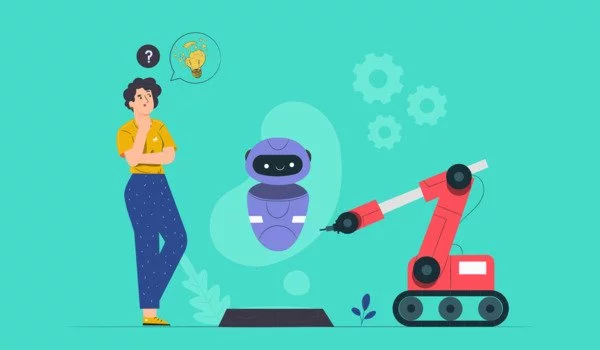AI has entered the mainstream thanks to generative AI (e.g., ChatGPT), which has raised worries about job displacement and creative labor. Experts increasingly emphasize the importance of focusing on ‘co-creativity,’ or human-AI interaction. Understanding co-creativity, which is critical for the future development of AI, requires extensive research.
Recent advances in generative artificial intelligence (AI) have demonstrated its promise in a wide range of creative activities, including the creation of works of art, the composition of symphonies, and the creation of legal writings, slide presentations, and the like. These discoveries have fueled fears that AI would surpass humans in creative jobs, rendering knowledge workers obsolete. A Fortune story titled ‘Elon Musk predicts AI will produce a future where ‘no employment is needed’: ‘The AI will be able to handle anything’ recently emphasized these remarks.
In a new paper in a Nature Human Behavior special issue on AI, researcher Janet Rafner from Aarhus Institute of Advanced Studies and Center for Hybrid Intelligence at Aarhus University and Prof. Jacob Sherson, Director of the Center for Hybrid Intelligence, together with international collaborators discuss research and societal implications of creativity and AI.
Keeping humans in the loop when working on and creating AI is not only considered as more ethical, but it is also the most efficient long-term solution, according to the team of academics.
The researchers propose that we should focus on understanding and developing co-creativity, or the relationship between humans and machines, in order to achieve ‘human-centered AI’ and ‘hybrid intelligence.’ As a result, we will be able to create interfaces that assure both high levels of automation through AI and human control, thereby fostering a partnership that properly empowers each other.
Rafner adds that most studies on human-AI co-creativity have come from the field of human-computer interaction and have focused on the AI’s capacities, as well as interaction design and dynamics. While these advances are critical for understanding the dynamics between humans and algorithms, as well as human attitudes toward the co-creative process and product, there is an urgent need to enrich these applications with the insights about creativity gained in the psychological sciences over the last decades.

“Right now, we need to shift the discussion away from concerns like, Can AI be creative? One reason for this is that identifying creativity is difficult. When researching human-only, machine-only, and human-AI co-creativity, we must consider the type and level of creativity under consideration, ranging from everyday creative activities (e.g., creating new recipes, artwork, or music) that may be more amenable to machine automation to paradigm-shifting contributions that may necessitate higher-level human intervention. Furthermore, considering subtle concerns such as, “What are the similarities and differences in human cognition, behavior, motivation, and self-efficacy between human-AI co-creativity and human creativity?” Rafner elaborates.
We now lack sufficient information of human-machine co-creativity since the distinction between human and AI contributions (and processes) is not always evident. In the future, researchers should strike a balance between predicted accuracy and theoretical comprehension (i.e., explainability), with the objective of constructing intelligent systems that can both measure and promote human creativity. When creating co-creative systems like virtual assistants, it will be critical to strike a balance between psychometric rigor and ecological validity. Co-creation projects, in other words, should combine rigorous psychological measurement with cutting-edge intuitive and engaging interface design.
Interdisciplinary collaborations are needed
The challenge of understanding and properly developing human-AI co-creative systems is not to be faced by a single discipline. Business and management scholars should be included to ensure that tasks sufficiently capture real-world professional challenges and to understand the implications of co-creativity for the future of work at macro and micro organizational scales, such as creativity in team dynamics with blended teams of humans and AI. Linguistics and learning scientists are needed to help us understand the impact and nuances of prompt engineering in text-to-x systems. Developmental psychologists will have to study the impact on human learning processes.
Ethical and meaningful developments
Keeping humans in the loop when working on and creating AI is not only considered as more ethical, but it is also the most efficient long-term solution, according to the team of academics. Beyond that, ethicists and legal experts must weigh the costs and benefits of co-creation in terms of intellectual property rights, human sense of purpose, and environmental effect.
















